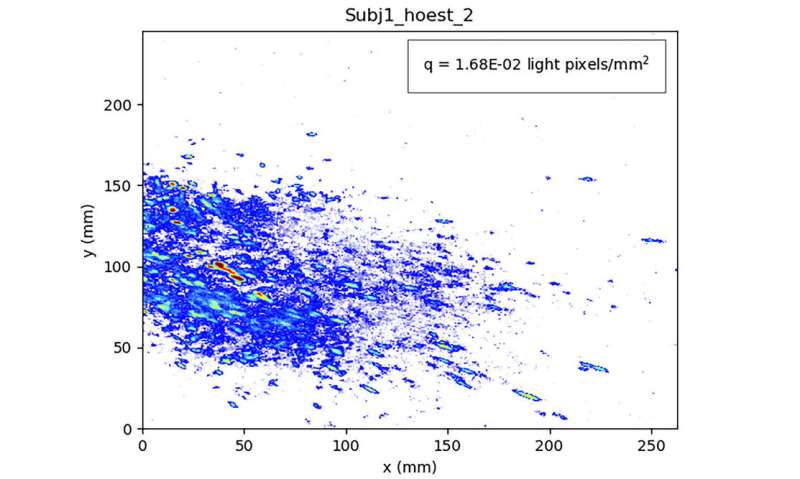Hand-held device measures aerosols for coronavirus risk assessment

Because of the role they play in coronavirus transmission, understanding aerosol concentrations and persistence in public spaces can help determine infection risks. However, measuring these concentrations is difficult, requiring specialized personnel and equipment.
That is, until now.
Researchers from the Cardiology Centers of the Netherlands and the University of Amsterdam demonstrate that a commercial hand-held particle counter can be used for this purpose and help determine the impacts of risk-reducing measures, like ventilation improvements. They describe the quick and easy, portable process in the journal Physics of Fluids.
The key challenge with using hand-held particle counters is dealing with the background dust prevalent in public spaces. The question then becomes, can you distinguish these dust particles from aerosols that arise from breathing, speaking, sneezing, and coughing?
Because dust and aerosols inhaled into human lungs differ in size, the researchers developed a way to subtract the dust signal in the particle counter by measuring the dust for some time, and watching how the signal changes after aerosols are added to the mix.
"There's a lot of fine dust, so we can't really measure aerosols in that range, but there's a reasonable sized range where you can detect the aerosols," said Daniel Bonn, one of the authors.
They compared the aerosol concentration determined by this method to laboratory-based techniques and found the results match up perfectly. Though this work reports on one specific hand-held particle counter—the Fluke 985, which is used to monitor the dust and air quality in clean rooms—Bonn noted the results aren't unique to this device and can be extended to other particle counters as well.
Though the method does not directly measure the presence of viral particles, the detected aerosol concentration can be combined with virus data from other studies to obtain a practical risk assessment for a specific type of public space. The findings suggest well-ventilated areas can have aerosol concentrations more than 100 times lower than poorly ventilated areas, such as public elevators or restrooms.
"There are people worried about going to the gym, coming to the office, taking the train. All that can at least be evaluated," Bonn said. "The motto remains ventilation, ventilation, ventilation."
He said while ventilation plays a large role in indoor spaces, aerosols are not the only route to infection, and social distancing and hand-washing remain vital.
More information: "Measurement of small droplet aerosol concentrations in public spaces using handheld particle counters," Physics of Fluids (2020). aip.scitation.org/doi/full/10.1063/5.0035701

















